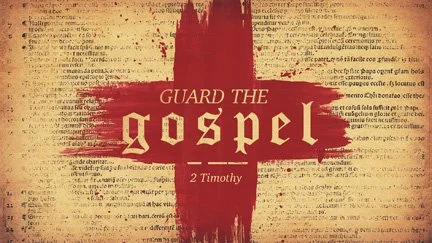Exodus 20:4-6
If I were to ask you, “What do you worship?” you might wonder about the question. Shouldn’t I be asking, “Whom do you worship?” No, you heard right the first time. What do you worship?
Joy Davidman, the wife of author C. S. Lewis, writing in1953 in her book, Smoke on the Mountain imagined these answers: I worship a fishtail Cadillac convertible, brother. All my days I give it offerings of oil and polish. Hours of my time are devoted to its ritual; and it brings me luck in all my undertakings; and it establishes me among my fellows as a success in life. What model is your car brother?
I worship my house beautiful, sister. Long and loving meditation have I spent on it; the chairs contrast with the rug, the curtains harmonize with the woodwork, all of it is perfect and holy … I live only for the service of my house, and it rewards me with the envy of my sisters, who must rise up and call me blessed … What shape is your idol, sister?
What shape is your idol? It’s a good question, even in 2021. But many people don’t think it is even relevant at all. J. Ellsworth Kalas writes in his book, The Ten Commandments from the Backside, “Not many people today worry about keeping the second commandment, nor do many think it has anything to say to their way of life … Most of us are comfortable with this commandment. It may have meant something to the Hittites, Jebusites, and some errant Israelites, but it’s no issue to anyone in what we perceive to be the civilized Western world … But the commandment is there, like it or not.”
The second commandment prohibits two things: it prohibits the worshiping of images or idols of false gods; and it prohibits the making and worshiping of idols intended to represent Yahweh. As Adam Hamilton puts it in his book, Words of Life, God “is not to be portrayed by means of images or statues, for Israel’s God is the creator of all things. He transcends the created world, and nothing made by our hands … could adequately represent him. Hence Israel’s religion, alone among the religions of the ancient Near East, would not make images or idols of her God.”
Simply stated, an idol is a god you can see. Hamilton writes, “Idols made the invisible gods visible and the intangible gods tangible.” They were made of wood or stone and placed in temples, or palaces of the gods. Within the temple, there was a throne room, or holy of holies, where the statue or idol was placed. Worshipers would enter this room to pray or make offerings. In addition to these statues and images, “small statues representing the gods of Egypt or Canaan were crafted, sold, and kept as representatives of the deities in the homes of common people. These ‘household gods’ are mentioned at least ten times throughout the Hebrew Bible, and the practice was common throughout the ancient world.” (Hamilton)
People seem to want a god they can see; after all, seeing is believing. That seems to have been a particular problem to the Israelites. In fact, after God had spoken the Ten Commandments to Moses and the Israelites, Moses stayed up on the mountain for forty days with God. The Israelites started getting restless and asked Aaron to make a god to lead them. What they wanted was an idol of Yahweh who was like the idols that the Egyptians had of their gods. So Aaron went along with them and made the golden calf, and they bowed down and worshiped it. Aaron declared, “This is your God … who brought you up out of the land of Egypt,” and said that the next day would be a festival to the Lord. It was clear that the golden calf was meant to represent God.
But God could not be contained in a hunk of gold. As Anne Robertson writes in her book, God’s Top 10, “This was a living God, not subject to the manipulation of human hands. The concern of the commandment is that people not carve God in stone and that the Israelites not limit their God to … one kind of face, shape, or image.” And John Killinger points out in his book, To My People with Love, “The other gods were easy enough to see. They were images of men or bulls or lions or eagles. But Yahweh, the real God, was transcendent. No one could see Yahweh … He was beyond all human understanding.”
God saw what the people were doing and became angry; he sent Moses back down the mountain to deal with the people. Moses threw the stone tablets down on the ground, which broke them into pieces. He grabbed the golden calf and threw it into the fire, where it was destroyed. And there was other punishment that came on the people for their unfaithfulness. They couldn’t even make it forty days without breaking one of the Ten Commandments.
Throughout Old Testament history, the Israelites struggled with this tendency to prefer a god they could see. They frequently wandered from God, and most often it began with a graven image. They were often chastised by the prophets for bowing down to the Baals. In Jeremiah 10:3-5, we find his scornful condemnation of those who would worship idols: a tree from the forest is cut down and worked with an ax by the hands of an artisan; people deck it with silver and gold; they fasten it with hammer and nails so that it cannot move. Their idols are like scarecrows in a cucumber field, and they cannot speak; they have to be carried, for they cannot walk. Do not be afraid of them, for they cannot do evil, nor is it in them to do good.
The problem with any idol or image of God is that we have a God that can be comprehended by our senses, a God who is limited, because all physical images are restrictive in some way. There is more to God than can ever be pictured. It reminds me of an old book by J. B. Phillips called Your God is Too Small. Idols make God smaller. As Kalas puts it, “idols reduce the infinite to the finite.”
So what does all of this have to do with us, here and now? We don’t have any idols in our homes, do we?
Well, don’t be too sure about that. I think that any one of us – maybe all of us – are capable of breaking the second commandment and worshiping idols. Because any material object can become an idol. For example, we can make an idol of our church. Don’t believe me? There are churches that have made idols of an organ, or a steeple, or a flag, or an altar, or an entire building! In other churches, the idols may be favorite hymns or forms of serving communion. Anne Robertson writes that these idols are “the things that pastors don’t know are worshiped until they try to move worship in another direction, with weeping and gnashing of teeth the usual result. These household gods violate the commandment against graven images because they don’t allow God to live and move. They keep Jesus sealed in the tomb of ‘the way we’ve always done it before.”
Other people make idols of a pastor, or music director, or favorite Christian author. Still others make an idol of the Bible and worship the Bible more than they worship God. Some people worship the activities of the church. As Adam Hamilton writes, “Missions, music, social justice, the fight for inclusion, environmental ministry, teaching children, and a hundred other good things that we might do for God can easily take the place of God in our lives.”
For some people, there are political idols. I hate to be the one to tell you, but God is neither a Republican nor a Democrat. As Anne Robertson says, “there are more than enough Bible passages, even within the sayings of Jesus, to make both Republicans and Democrats decidedly uncomfortable.” No political party, no political leader, not even a long-serving Senator or beloved President, should become an idol. There is great danger in putting that person in the place of God. Robertson writes, “Idols always end up demanding human sacrifice, and in the case of our intense political polarization, the sacrifice has been the unity of our country. We’ve become afraid to speak our minds, to offer an opinion contrary to the political culture in which we travel. That sort of fear is exactly what leads to the tyranny of the majority. If we don’t make up our minds to smash our political idols into dust, the future of our nation is in jeopardy. To destroy these idols, we need a strong dose of moral courage. We need the courage to step across the aisle … Who has the courage to lay their positions and their wealth on the line and admit mistakes? Who has the courage to stand up to powerful and well-heeled lobbyists? When will we stop having contests between my idol and yours and have meaningful debate?”
Interestingly enough, the Ten Commandments themselves have become something of an idol in American culture. You mighty remember Judge Roy Moore of Alabama, who refused a court order to remove a monument of the Ten Commandments from his courthouse. Eventually the monument was removed, and it was taken to cities across the country, where people cheered it on and even kissed it. Anne Robertson said, “Maybe it’s just me, but it seems odd that this image of God’s law, carved in stone, has become exactly the thing its words prohibit.”
No matter what form we try to reduce God to, no matter what our idol may look like, we cannot contain God in any image or idol. God is bigger than anything we can ever imagine. God cannot be adequately represented in any image. With two exceptions according to Adam Hamilton. Let’s look at what they are.
First, God made his image visible in Jesus, his Son. John 1:14 says, “the Word became flesh and lived among us.” Jesus is the incarnation of God, not an idol, but God in the flesh. And Colossians 1:15 says, “The Son is the image of the invisible God.” If you want to know what God is like, look at Jesus. But even then, we don’t have any physical, material image of Jesus from the 1st century. There were no cameras on hand to capture his picture. No one painted him and no one carved his face in stone. What we have is a “picture” of him in the Gospels, a description of what Jesus is like from his words and his deeds. And that gives us a picture of what God is like.
Second, God makes his image visible in you and me. Genesis tells us that God created human beings in his own image. We were meant to reflect the glory of God. And when we live as Jesus taught us to live, when we walk the way of Christ, we reveal God in the world.
One last thought. To quote Joy Davidman, “The real horror of idols is not merely that they give us nothing, but that they take away from us even that which we have. By the act of imagining power in the [idol] we rob ourselves, and the Holy Spirit within us, of that much power … The more we look to material objects for help, the less we can help ourselves or ask help from the grace of God. If we are to be saved, it will not be by wood, however well carved and polished; nor by machines, however efficient … If we are to be saved, it must be by the one power that is built into a man at his beginning and that he does not have to make with his hands – the power of the Holy Spirit, which is God.”

























